The Gate bo-1 Read online
Page 14
“What about the report this Major Harlan filed?” “If it still exists, it would require a hell of a lot of work to find and would really add very little in the way of proof to the article itself,” Harmon said. “I didn’t pursue this because it sounded farfetched and because there was no avenue to pursue. No proof.”
“There must have been something in the box the North Koreans took,” Lake said.
Harmon conceded that point. “They must have known what to look for. But what they found might not be proof. Perhaps they were looking for some other information to point them to proof.” She removed the CD-ROM disc from the computer and returned it.
Lake thought about it. He didn’t know exactly how the revelation that the Japanese had had an atomic bomb program during World War II would affect the current world order, but he had no doubt that it would not be good. That was motive enough for all that had happened the last several days. He wondered if Araki knew anything about this.
Harmon came back and indicated for them to leave. Lake followed her out of the library deep in thought. By the time they had returned to Wellman Hall, he had gone full circle and come back to the start line, wiser but still in the same place. “I have to get that box to find out what’s going on,” was his conclusion.
Dr. Harmon agreed. “At least then we’ll know what’s important and maybe that will tell us why it’s important.”
“I’d prefer if you wouldn’t inform anyone about my visit here,” Lake said.
“I won’t,” Harmon said. “Besides, as you told me, what can I tell them?”
“Thanks.”
“Will you be back?” Harmon asked. “You promised me that you would fill me in on what’s going on. That’s my price for helping you.”
Lake, paused and looked her in the eyes, feeling out the edges to the question. “Yeah, I’ll be back. I’ll let you know how it turns out.”
“Thanks. And be careful,” she added as he swung the door shut.
11:45 A.M. LOCAL
“For a box of old papers?” Okomo was not impressed. They were seated on top of the Japan Center, inside the cocoon of the Yakuza’s protective black glass.
Prior to coming here, Nishin had called back to Japan from a pay phone using the card and special number Nakanga had given him. His boss’s instructions had been simple: Stop the North Koreans. Use any means necessary.
The only means Nishin had at his disposal, or hoped he had at his disposal, were under the control of Okomo, and the old man had listened to his story of the North Koreans with little patience. “You do not know what is in the box? It could be nothing.”
“The North Koreans consider it something worth dying over, Oyabun,” Nishih said, keeping his voice flat.
Okomo spit out a laugh. “The life of a Korean is worth nothing to me.” The Oyabun was using a gold toothpick, working on his teeth. He spit something to the side. “I don’t like you,” he added. “I don’t like your organization. Why should I help?”
“The friendship of the Black Ocean Society can be a very valuable thing, Oyabun,” Nishin said. He had to grit his teeth to keep from adding his next immediate thought: And the enmity of the Society was a very dangerous thing. He felt the point of the ice scraper on the skin above a ridge of stomach muscle.
“Besides,” Okomo said, “the docks are not mine. At least not on that side of the bay where their trawler is anchored. It would be bad for business for me to interfere where my arm is not supposed to reach.”
“We can take the ship after it departs the harbor,” Nishin said. “At sea, outside the twelve-mile limit. Surely your arm can reach that far. And there will be no trouble from the law, American or otherwise, in international waters, Oyabun.”
Okomo stood. “Wait here.” Nishin watched the old man walk to a door at the rear of the room. The doors slid open and he was gone. He was back in less than a minute.
“It might be possible,” Okomo said. “But it would require a ship and men. Very expensive.”
“We will pay you two million in American dollars for your assistance, Oyabun.”
Okomo looked at Nishin impassively. Nishin felt like he was in a fish market, trying to bargain with an old lady over some moldering carcass. “Three million.”
“Four million with a bonus of one hundred thousand dollars to the family of any man killed or seriously injured,” Okomo finally said.
Nishin inclined his head, indicating acceptance of the terms.
SAPPORO, HOKKAIDO, JAPAN
WEDNESDAY, 8 OCTOBER 1997
9:00 A.M. LOCAL
When Nakanga informed him that the Koreans had gone to the University of California at Berkeley, Kuzumi had felt a cold chill run down his spine. He ordered Nakanga to have Nishin stop the Koreans at all cost. As Nakanga left the room, the blue phone on his desk rang. Kuzumi picked it up. The voice on the other end was mechanical, the result of being scrambled and digitized to prevent interception and decryption.
“The box contains Japanese naval records from August 1945.”
Kuzumi relaxed slightly.
“I am not sure exactly what records,” the voice continued.
“It will be taken care of,” Kuzumi said. ‘~“What about the Americans?”
“The lid is still on.”
“All right. We must ensure it stays on.” He turned the phone off.
Kuzumi flicked a switch which ensured he would not be disturbed, then he closed his eyes and thought.
So strange that the Koreans should go to UCBerkeley where he had worked so many years ago. He was relieved that they were only after documents from the war. He knew that records of his presence there in 1939 might exist, but there was no way the Koreans could connect that with him now. He was supposed to have died in 1945. The only person who knew he was still alive and the Genoysha of the Black Ocean was Nakanga.
When he had been returned from the Russian camp, Genoysha Taiyo had assigned Nakanga to care for him and look after him, cutting Kuzumi off from all other outside contact. Then he had been given a new identity and brought back into the fold, working in the super-secret inner circle of the Society. To all it had long ago been reported that he had died at Hiroshima in 1945.
Kuzumi’s left eyebrow twitched, the only sign that that thought had evoked a strong emotion in him. Because he felt he ought to have died at Hiroshima. His son had.
When Genoysha Taiyo had confronted him about Nira’s pregnancy and subsequent childbirth, Kuzumi had been shocked, yet secretly elated that he now had a son.
He knew he would have been killed over the issue if it wasn’t for the fact that the Society needed his atomic expertise so badly. Leaving a child in a foreign country, one that Japan would soon be at war with, was not the most secure action an agent could have done. The possibility for blackmail, or at least attempted blackmail, was high. Also, the illegitimate child threatened Nira’s position working at the university. But because Nira continued to work for the Black Ocean and they did not doubt Kuzumi’s loyalty, initially Genoysha Taiyo’ had not considered the boy to be a problem. But then war came in December 1941, and Nira was in enemy territory with their son.
His Sensei explained it to him. Since the situation was unacceptable and Kuzumi was too valuable for action to be taken on him, another course of action must be implemented. Kuzumi had felt fear then. He knew what the Society was capable of and he feared that they were going to kill his son.
But the Genoysha had an idea, his Sensei explained. “We will bring your son here. He will become part of the Society.”
Kuzumi felt tremendous relief at hearing those words. He soon found out that the Black Ocean was in contact with an extensive spy network run by the Spanish called “TO,” Japanese for door. The Spanish relayed information through their embassy in Washington to Madrid, where it was forwarded to Tokyo. This was the way Nira was able to update them on the status of Lawrence’s work on the electronic process for U-235 separation, the part of the Manhattan Project that was being conducte
d under his direction. It was also how the Genzai Bakudan project was finding out other essential information that helped keep the project moving.
The TO network could also move people. In April 1942 they picked up Kuzumi’s and Nira’s son, James, and took him south, across the border into Mexico. They loaded him onto a Mexican fishing boat which rendezvoused with a Japanese submarine in the South Pacific.
Kuzumi had met his son at dockside upon his arrival. He promptly renamed his son Sakae after his own father and also because the American name would have brought him untold grief among the other children at the Society Home place school. Kuzumi spent every available moment with him, although with the pressures of the project there wasn’t much of that. He was able to send an occasional encrypted letter back to Nira through the TO network, telling her how Sakae was growing. Unfortunately, he was not allowed to send her any pictures. His major desire became to finish work on Genzai Bakudan in order to help bring about a quick end to the war.
But the project progressed slowly. On the thirty-first of May 1942, in San Francisco, Nira watched the American battleships Colorado and Maryland pass beneath the Golden Gate Bridge under a full head of steam heading west, not knowing that they were already too late to join the American fleet which was massing off of Midway in response to having broken the Japanese secret code and anticipating their assault on that island. Kuzumi was in Japan, still working on theoretical problems with designing an atomic weapon. He and the other scientists were wrestling with how to separate out U-235 from the uranium deposits they had and what the critical mass would be that they would need.
It was work that took years rather than months. And the Battle of Midway had changed the complexion of the war. The Americans were now on the offensive. The year 1943 saw the tide decisively swing toward the United States and the Imperial forces were on the defensive in every area of the Empire. But those defeats, ironically, also gave impetus to progress in Genzai Bakudan. As the armed forces, particularly the Navy, were defeated in conventional combat they directed more resources to the Genzai Bakudan project as a way to regain their superiority over the Americans. There was also the sobering realization that the war was going to last much longer than anyone on the Imperial Staff had expected. Therefore a long-term project such as the atomic bomb was more feasible now.
By late 1943 the Genzai Bakudan project had gathered enough uranium for the needed experiments, no small feat by itself. It had required sending agents out throughout the Empire and commandeering ships and submarines to bring the material back.
Kuzumi remembered those difficult days: convincing men in uniform to bring back small quantities of an ore most had never heard of, while at the same time tackling the numerous other problems the project faced.
As the pile of uranium grew, they then faced the problem of separating out the U-235. Nira reported from San Francisco that Professor Lawrence was separating out about a quarter of an ounce of U-235 each day using a cyclotron. The problem for Kuzumi was that there was only one cyclotron in Japan and to convert it to producing U-235 would have meant they couldn’t use it for the other experiments they needed to conduct for the project. He turned the search elsewhere.
Kuzumi almost had to laugh now at how little they knew back then. They settled on a method called thermal diffusion, which had been perfected in Germany, which meant they had easier access to some of the information on it.
Slowly but surely, though, they overcame each obstacle. Kuzumi turned from his desk and opened his file cabinet and pulled out his wooden box of memories. Digging through he found an old photo that had stayed in Japan when he went to Korea. It showed a group of men in white coats standing in front of blackboard. The best and the brightest from all the universities in Japan, and Kuzumi, young as he was, had been in charge.
By the beginning of 1945 they were past theory and into trial and error with the different components that would make up a bomb. But the sands in the hour glass were running even quicker. The first American heavy bomber attack on Japan had occurred on the fifteenth of June 1944. In February of ‘45 the Americans captured Iwo Jima and were just over three hours from Tokyo by air. Death and destruction from above became a daily diet for the Japanese.
The loss of power hamstrung the program. B-29s destroyed the power grid feeding the Rikken, and Kuzumi was forced to face the reality that they could not finish the bomb in Japan. He went to Genoysha Taiyo and explained the situation. Taiyo made the decision. The entire project was moved to Hungnam, across the Sea of Japan, where there was plenty of power flowing from the reservoir at Chosin.
Kuzumi gritted his teeth as he remembered packing the labs and equipment for the move. It cost them almost two months in time. In the end the delay probably cost them the war. The worst for Kuzumi was that he had to leave Sakae. The Black Ocean Society was preparing for the eventual U.S. invasion by dispersing its assets and personnel. The Homeplace school was shut down.
Kuzumi gripped the arms of his chair. At the time it had seemed the logical thing to do: Send Sakae to stay with his own parents. So he had said good-bye to his son and departed for Hungnam. Little would he have guessed that he would not return to Japan for over eight years ‘and never see his son again.
In prison the Russians had told him little of what had gone on in the outside world. He had been told that Japan had surrendered. That the war was finally over. And to torment the scientists, Kuzumi in particular, they told him of what the Americans had done to end the war. Of the atomic bombs that had been dropped and their targets.
For eight years Kuzumi did not know whether his son had lived or died in the atomic attack. He also did not know what had become of Nira. When he was flown back to Sapporo by the Black Ocean after being released by the Russians, Nakanga took him directly in his wheelchair to this very room to meet Genoysha Taiyo.
Taiyo had stood upon Kuzumi’s entering the room, a very great sign of respect, especially as Kuzumi could not stand himself. Kuzumi remembered the words as if they were being spoken now, drawn back out of the walls that had absorbed them so many years ago. “I have been told of your concerns in reference to your son and your wife. I regret to inform you that your son perished in the atomic attack on Hiroshima. There was no sign of him or your parents after the attack. Your family house was completely destroyed.”
Kuzumi had prepared himself for this. His face had betrayed nothing, although he felt the knife of truth cut the thread of hope he had held onto for so many years. Hope that had kept him alive in the dark hole of his cell and through the torture sessions.
“Your wife is also dead. As best we have been able to determine, she committed suicide after learning of the attack on Hiroshima and your son’s death.”
The second blow had landed on a dead heart. “Did she know of my imprisonment?” Kuzumi had asked. “We informed her in the last message that we know she received that your plane had gone down and you were missing and presumed dead. In the same message we replied to her request about your son, confirming that he was lost.”
Poor Nira. Even now Kuzumi could well imagine her grief receiving two pieces of news in one message. Grief that she would have had to have borne alone among a country full of enemies. Grief that she could tell no one about.
“How did she die?” he had asked. “We have a report that she jumped from the Golden Gate Bridge. The body was washed out to sea.”
All gone. All he had left was the Black Ocean. And now it was threatened. He looked at the wooden box that held all his memories. What had the Koreans found in their cardboard box? What memories were they delving into?
CHAPTER 8
SAN FRANCISCO
TUESDAY, 7 OCTOBER 1997
9:48 P.M. LOCAL
The proper papers had been filed and all was in order. The Am Nok Sung was cleared to leave San Francisco Harbor any time between 2200 and 2400 local time. The ship was 20,000 tons, less than mid-sized as oceangoing ships went. The forward deck consisted of several large hatches leading
to refrigerated holds for the fish. At the rear a three-story bridge complex rose up, overlooking the ship.
The Am Nok Sung actually had a complement of twelve men on board whose only job was to indeed conduct fishing operations to maintain the ship’s cover and sail the ship. A platoon of North Korean Special Forces made up the rest of the crew. Minus the two men they’d lost on Yerba Buena Island, whose identity baffled San Francisco police, there were still sixteen combat-hardened men left on board.
They only had seven MAC-10s between them for firepower, but a black belt in a Taste Kwon Do was a requirement for every member of the North Korean Special Forces. When getting ready to depart on this mission it had been a most difficult decision to not bring their own weapons on board the ship. The platoon commander had demanded that he be allowed to bring weapons, but the overall mission commander in North Korea had overruled him. The American customs officials had too good of a record. A platoon of soldiers on board a ship with hidden weapons would have been a most unfortunate discovery. Thus, when the ship had come into port, customs had found nothing other than a very strange-looking crew; but there was nothing illegal about that.
There was a twenty-ninth man on board, neither soldier nor crew, who answered only to the platoon commander. This man was a linguist, fluent in English and Japanese, and he was currently locked in a room on the second floor of the ship’s bridge tower, three-quarters of the way back on the deck. The bridge and radio shack were one floor above him while the main quarters were one floor below. The twenty-ninth man, Kim Pak, had the box that so many people were now interested in sitting on the desk in front of him. He was going through it, one document at a time, reading carefully, looking for a couple of key items.
In the center of San Francisco Bay, Nishin stood on the bridge of an old tugboat, watching the Am Nok Sung through a set of night-vision goggles. He could see the crew moving about the deck of the trawler.

 Independence Day
Independence Day Invasion
Invasion Chasing the Ghost
Chasing the Ghost Hallows Eve
Hallows Eve New York Minute
New York Minute Valentines Day
Valentines Day Eyes of the Hammer
Eyes of the Hammer Walk on the Wild Side
Walk on the Wild Side D-Day
D-Day Lawyers, Guns and Money
Lawyers, Guns and Money Z: The Final Countdown
Z: The Final Countdown Redemption: Area 51, #10
Redemption: Area 51, #10 Time Patrol
Time Patrol Interstellar
Interstellar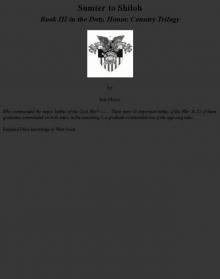 Sumter to Shiloh
Sumter to Shiloh Dragon Sim-13
Dragon Sim-13 The Line
The Line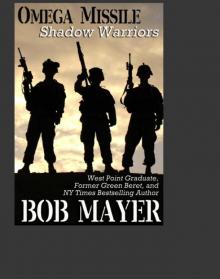 Omega Missile (Shadow Warriors)
Omega Missile (Shadow Warriors) The Rift
The Rift The Jefferson Allegiance
The Jefferson Allegiance Project Aura
Project Aura Synbat
Synbat Ides of March (Time Patrol)
Ides of March (Time Patrol) Nightstalkers a5-10
Nightstalkers a5-10 Lost Girls tc-2
Lost Girls tc-2 West Point to Mexico
West Point to Mexico Mexico to Sumter
Mexico to Sumter Area 51_Invasion
Area 51_Invasion Eternity Base
Eternity Base The Line bo-2
The Line bo-2 Atlantis Gate
Atlantis Gate I, Judas
I, Judas Area 51_Redemption
Area 51_Redemption Bodyguard of Lies
Bodyguard of Lies Cut Out
Cut Out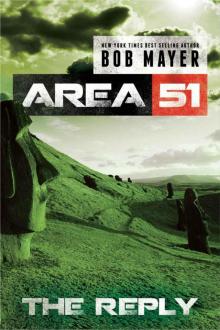 The Reply (Area 51 Series Book 2)
The Reply (Area 51 Series Book 2) Synbat tgb-3
Synbat tgb-3 The Book of Truths a5tn-2
The Book of Truths a5tn-2 Eyes of the Hammer (The Green Beret Series)
Eyes of the Hammer (The Green Beret Series)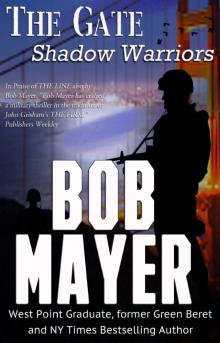 The Gate
The Gate The Gate bo-1
The Gate bo-1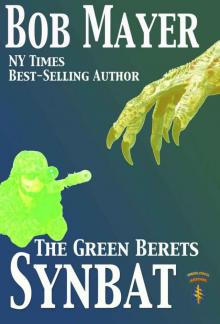 Synbat v5
Synbat v5 Omega Sanction
Omega Sanction Z
Z Chasing the Son
Chasing the Son Nightstalkers
Nightstalkers The Book of Truths
The Book of Truths Dragon Sim-13 tgb-2
Dragon Sim-13 tgb-2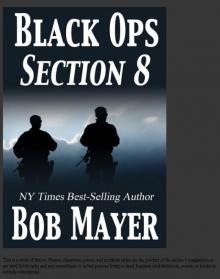 Section 8
Section 8 Chasing the Ghost v5
Chasing the Ghost v5 Psychic Warrior
Psychic Warrior Chasing the Lost
Chasing the Lost The Kennedy Endeavor (Presidential Series Book 2)
The Kennedy Endeavor (Presidential Series Book 2)